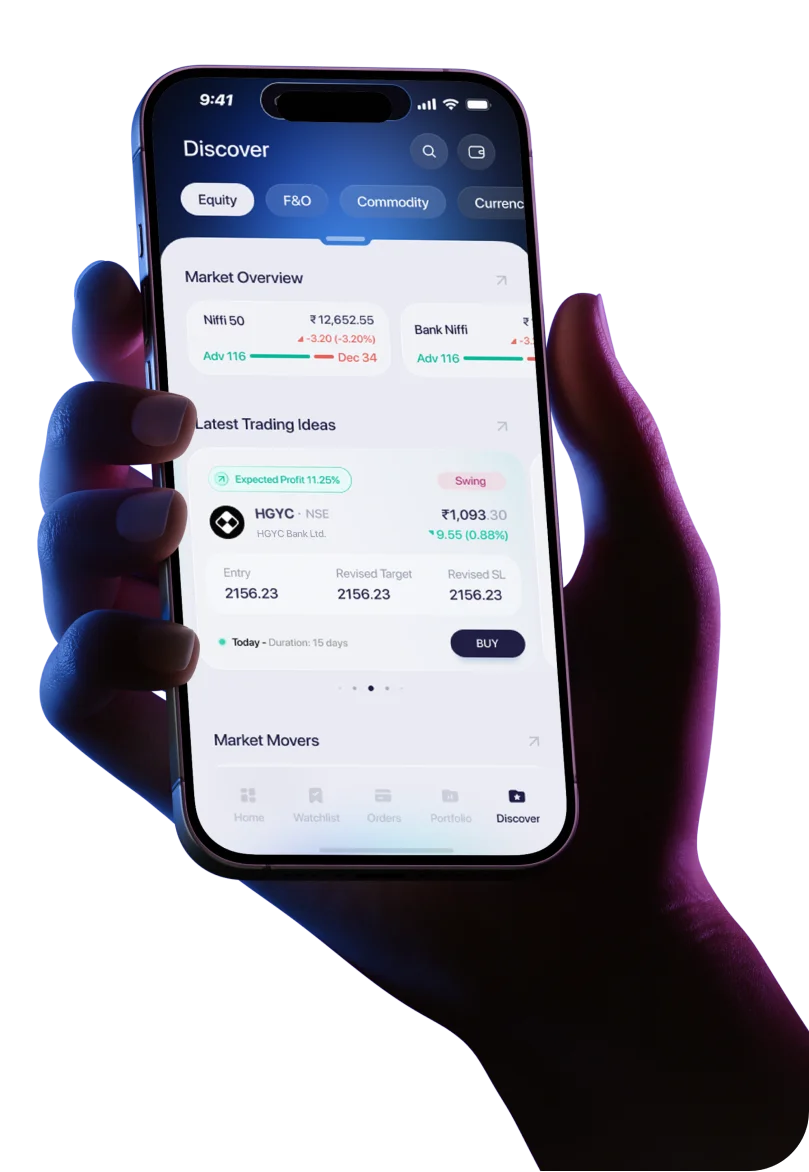Introduction
In stock markets, prices don’t always move smoothly from one level to another. Sometimes, they jump—leaving a blank space or “gap” on the chart. This phenomenon is called gap trading, and it is especially popular among intraday and short-term traders who thrive on quick price movements.
Understanding gap movements is crucial in the Indian market where overnight news, results, or global cues can cause sharp openings in stocks and indices. For many traders, gaps create opportunities to capture short bursts of momentum or profit from reversals.
What is a Gap in Trading?
A gap occurs when a stock opens significantly higher or lower than its previous day’s close, without any trading in between. On a candlestick chart, it appears as an empty space between two price levels.
- Gap Up: When today’s opening price is higher than yesterday’s close.
- Gap Down: When today’s opening price is lower than yesterday’s close.
👉 Example: If Reliance closed at ₹2,500 yesterday and opened at ₹2,575 today, that ₹75 difference without trading is a gap up.
Why Do Gaps Occur in the Stock Market?
Gaps are a reflection of sudden market reactions, often triggered by factors outside regular trading hours:
- After-hours news or earnings results – A company announcing strong results may trigger a gap up.
- Pre-market volatility – Global cues or commodity prices (like crude oil) can impact Indian stocks.
- Institutional buying/selling – FIIs or DIIs taking large positions often create gaps.
- Technical breakouts – When a stock crosses a crucial resistance/support overnight.
Types of Gaps in Trading (with Examples)
- Common Gap
- Definition: Regular price gaps often caused by temporary factors.
- Cause: Low volume or lack of interest.
- Example: A mid-cap stock showing a small overnight gap that fills within a day.
- Breakaway Gap
- Definition: Occurs when the price breaks out of a consolidation zone or pattern.
- Cause: Strong news flow or earnings.
- Example: Infosys breaking out of a range after quarterly results.
- Runaway Gap
- Definition: Happens in the middle of a strong trend, showing continuation.
- Cause: Momentum-driven institutional buying/selling.
- Example: Nifty rallying with consecutive gap ups during a bull run.
- Exhaustion Gap
- Definition: Appears at the end of a trend, often signaling reversal.
- Cause: Overextended buying/selling.
- Example: A stock in a sharp uptrend gapping up but then reversing sharply.
Gap Trading Strategies: How to Trade Gaps Effectively
- Gap and Go Strategy (Momentum Following)
- Concept: Trade in the direction of the gap.
- Entry: Enter when the price sustains above the gap (gap up) or below (gap down).
- Confirmation: Strong volume and momentum indicators like RSI.
- Stop Loss: Just below the gap area.
- Fade the Gap Strategy (Mean Reversion)
- Concept: Opposite of momentum trading; expect price to move back toward the previous close.
- Entry: When price shows rejection candles or loses momentum.
- Stop Loss: Beyond the high/low of the gap.
- Gap Fill Strategy (Price Reverts to Previous Close)
- Concept: Gaps tend to “fill,” meaning the price often revisits the previous day’s close.
- Entry: Once reversal signals appear.
- Stop Loss: Beyond the extreme of the gap.
Always check volume confirmation, maintain a favorable risk-reward ratio, and avoid chasing gaps too late.
Tools & Indicators Used in Gap Trading
Successful gap trading requires confirmation. The most widely used tools are:
- Volume – Validates whether the gap has strength.
- Moving Averages (EMA/SMA) – Identify short-term trends supporting the gap.
- VWAP – Helps gauge intraday strength and institutional interest.
- RSI/MACD – Confirms whether momentum aligns with the gap.
Mistakes to Avoid While Trading Gaps
- Entering without proper confirmation of volume or trend.
- Over-leveraging positions due to excitement.
- Ignoring pre-market sentiment and global cues.
- Entering too late, after the best move has already happened.
Real Examples from Indian Stock Market
- Reliance Industries – Gapped up after announcing strong earnings. Sustained above VWAP, offering a profitable Gap & Go trade.
- Infosys – Post-earnings, opened gap down but quickly filled the gap as buyers stepped in—classic Gap Fill strategy.
- Nifty 50 – In strong bull phases, consecutive gap ups provided multiple momentum setups.
Backtesting & Journaling for Gap Trades
Before applying gap strategies with real capital, backtesting is essential. Reviewing past gap setups on NSE/BSE charts helps identify success rates.
Traders can maintain a journal to track:
- Entry & exit levels
- Type of gap traded
- Market conditions
- Win/loss ratio
Should You Use Gap Trading as a Full-Time Strategy?
Gap trading can be profitable but comes with risks:
- Pros: Quick opportunities, ideal for intraday & swing traders, works well in volatile markets.
- Cons: Requires strict discipline, not reliable in sideways markets, high risk if misjudged.
- Best suited for: Intraday traders with strong technical knowledge, not long-term investors.
Conclusion
Gap trading is an exciting approach that combines market psychology, technical analysis, and risk management. By understanding the types of gaps and applying the right gap trading strategies, traders can take advantage of sudden price movements.
For Indian traders, gaps often hold the key to short-term opportunities, provided one follows discipline and avoids common mistakes. Whether you’re a beginner exploring what is gap trading or an intermediate trader refining your gap trading strategy, consistent practice and journaling are essential for success.




 Easy & quick
Easy & quick
Leave A Comment?